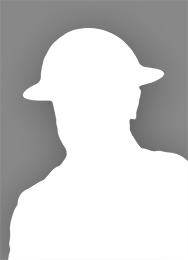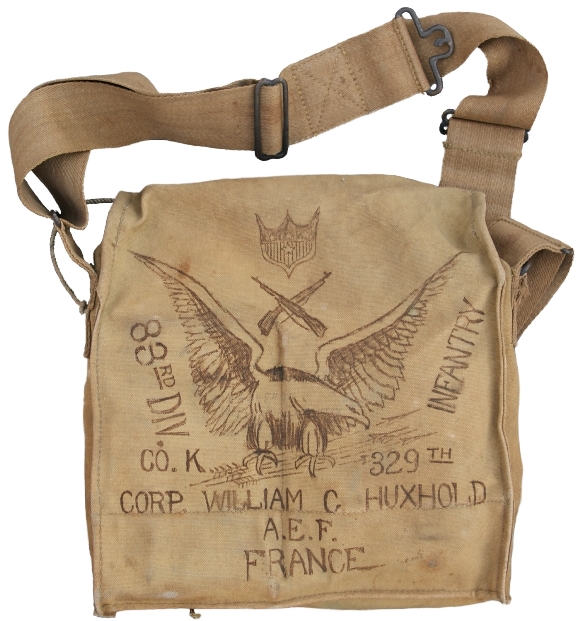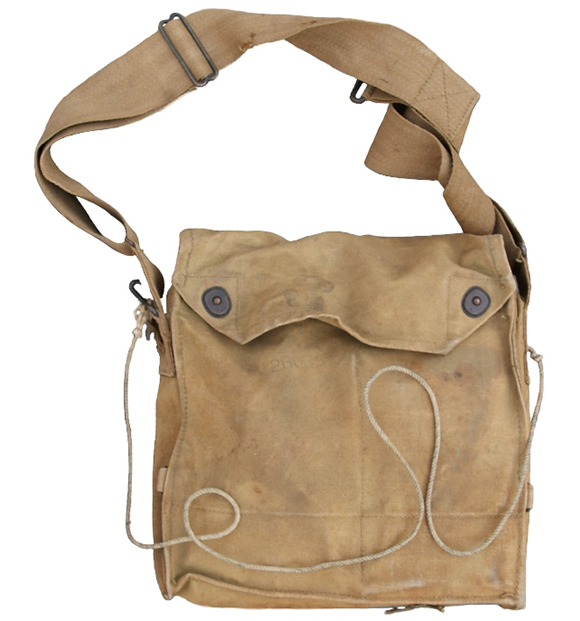WW1 Gasmask Bag
Corporal William C. Huxhold - K Company, 329th Infantry Regiment
The item featured here is a US Army gas mask and gas mask bag, as issued during World War One. The mask and tank are in rough shape, but the bag is still in great shape and features hand drawn art. This was most likely done by either the solider himself, Corporal William Huxhold, or by an artist soldier for him. A very interesting piece showing a unique sort of souvenir art which soldiers of that period used on their equipment featuring references to their unit, areas of operation or othe personal information.
Corporal William Charles Huxhold
Corporal
William Charles Huxhold

Corporal William Charles Huxhold
William C. Huxhold was born on January 20, 1897 in Havana, Illinois, as the son of Charles Huxhold and Louise Huxhold. After his enlistment and basic training William Huxhold was assigned to the 57th Pioneer Infantry Regiment. Together with his unit he was send to France with little to no training late September 1918 in an effort to answer the huge demand of manpower needed to fight the war.
Even before embarking in New York the ill-fated 57th Regiment was hit by the Spanish Flu pandemic. Soldiers hit by flu and too weak to continue were brought back to camp during the march to New York or taken off the ship when showing symptoms. After the SS Leviathan left port on September 29, 1918 the worst was still to come. In the confined spaces of the ship the virus found a perfect ground to spread. Of the 9000 soldiers more than 2000 fell sick with Flu or Pneunomia symptoms by the time the Leviathan arrived at Brest, France. Over 90 people on board had died at sea. However, after disembarking the issue only got worse and more than 200 soldiers of the 57th Regiment alone would succumb to the Flu and/or pneunomia caused by it. Despite all this the men had to press on and along with many others William Huxhold was send to K Company, 329th Infantry Regiment for further training.
The following excerpt was taken from a letter by Pfc. Henry Forte, as a fellow member of the 57th Pioneer Infantry Regiment and Company K it is very likely his experiences mirror those of William Huxhold. (source) Can you imagine sending us as soldiers overseas without any training? We stayed 3 days at Camp Merritt and boarded the largest and fastest ship on the water in those days, the Leviathan, the German ship that the U.S. captured on our Atlantic Coast when we declared War on Germany. We sailed on September 29th and arrived at Brest, France on October 8th, 1918. We remained at Brest for 3 days and nights. We were stationed at Cremay for 2 weeks and from there went to Le Mans. We arrived there on October 30th, stayed one day, and were then transferred by motor truck to Cérans-Foulletourte, France, where we were designated as “Casuals.” This is where we separated from the 57th Pioneer Infantry to Company K, 329th Infantry, 83rd Division. There we took the ‘McNab’ work, in other words, that was our first rifle practice, and from there we went to St. Ouen – that was the Rifle Range. We were on the rifle range on November 11th, Armistice Day.
After the end of the war William Huxhold returned to the US aboard the SS Minekada arriving in New York on January 31, 1919.


Army Gas Masks
Chemical warfare was widely used during WWI. All sides involved in the battles used mustard gas at one time or another. The need for soldiers to have protection against the gas became apparent very quickly. The gas mask shown in this page is one of the early examples of the items worn during the war. The mask came in a cotton pouch that had a long strap. The carrying case was worn in front of the chest during the battle. This was accomplished by shortening the strap and tying a rope around the torso. This would secure the mask during brisk movement. The mask was carried like a purse during non-combat time.